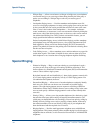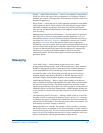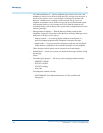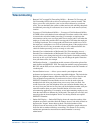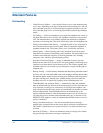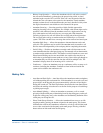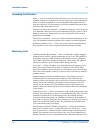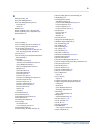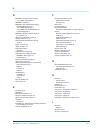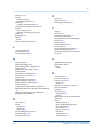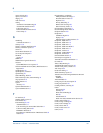
Attendant Features C
Overview for Avaya IP600 Internet Protocol Communications Server
555-233-001 — Issue 5 — November 2000
130
Accessing the Attendant
• Recall — users to recall the Attendant when they are on a two-party call or on an
Attendant Conference call held on the console. Single-line users press the Recall
button or flash the switchhook to recall the Attendant. Multi-appearance users
press the Conference or Transfer button to recall the Attendant and remain on the
connection when either button is used.
• Emergency Access to the Attendant — Provides for emergency calls to be placed
to an Attendant. These calls can be placed automatically by the system or can be
dialed by system users. Emergency access calls will generally receive priority
handling by the Attendant.
• Dial Access to Attendant — llows you to reach an Attendant by dialing an access
code. The Attendant can then extend the call to a trunk or to another telephone.
• Individual Attendant Access — Allows you to call a specific attendant console.
Each attendant console can be assigned an individual extension number.
Monitoring Calls
• Trunk Identification By Attendant — Allows an Attendant or display-equipped
telephone user to identify a specific trunk being used on a call. This capability is
provided by assigning a Trunk ID button to the attendant console or telephone.
This feature is particularly helpful for identifying a faulty trunk. That trunk can
then be removed from service and the problem quickly corrected.
• Crisis Alert — Visibly and audibly alerts Attendants when an emergency call is
placed. The feature indicates from where an emergency call is made, which
allows the Attendant to direct emergency-service response to the caller. Though
often used in the hospitality industry, it can be set up to work with any standard
attendant console.
Audible alerting sounds like an ambulance siren. Visual alerting consists of
flashing of the crisis-alert button lamp and display of the caller name and
extension. When crisis alerting is active, the console is placed in position-busy
mode so that no other incoming calls interfere with the emergency call. The
console can still originate calls. The Attendant must press the position-busy
button to unbusy the console and the crisis-alert button to deactivate audible and
visual alerting.
• Trunk Group Access — Allows an Attendant to control trunk groups and prevents
telephone users from directly accessing a controlled trunk group. This allows the
Attendant to monitor the use of these trunk groups. By watching the lamps
associated with the trunk groups, the Attendant can determine if the number of
busy trunks in a specific trunk group has reached a preset warning level and if all
trunks in a specific trunk group are busy. The Attendant can then handle other
calls to these trunk groups accordingly.
• Direct Extension Selection With Busy Lamp Field — Allows the Attendant to
keep track of extension status — whether the extension is idle or busy — and to
place or extend calls to extension numbers without having to dial the extension
number. The Attendant can use this feature in two ways: using standard Direct
Extension Selection access, or using enhanced Direct Extension Selection access.



